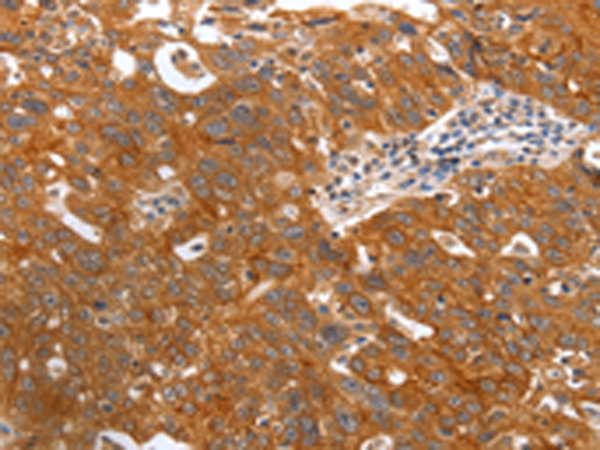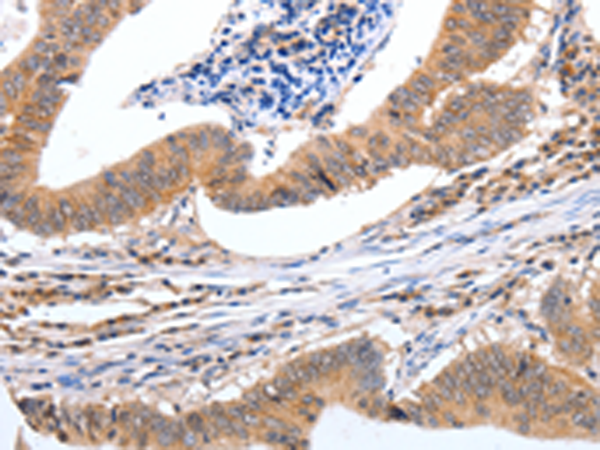


| WB | 1/500-1/2000 | Human,Mouse,Rat |
| IF | 咨询技术 | Human,Mouse,Rat |
| IHC | 1/25-1/100 | Human,Mouse,Rat |
| ICC | 技术咨询 | Human,Mouse,Rat |
| FCM | 咨询技术 | Human,Mouse,Rat |
| Elisa | 1/2000-1/5000 | Human,Mouse,Rat |
| Aliases | PEPC, PGII |
| WB Predicted band size | 42 kDa |
| Host/Isotype | Rabbit IgG |
| Antibody Type | Primary antibody |
| Storage | Store at 4°C short term. Aliquot and store at -20°C long term. Avoid freeze/thaw cycles. |
| Species Reactivity | Human |
| Immunogen | Fusion protein of human PGC |
| Formulation | Purified antibody in PBS with 0.05% sodium azide and 50% glycerol. |
+ +
以下是3篇与PGC(通常指PGC-1α)抗体相关的高影响力文献摘要概括:
1. **《Transcriptional co-activator PGC-1α drives the formation of slow-twitch muscle fibres》**
- **作者**: Lin, J., Wu, H., Tarr, P.T., et al.
- **摘要**: 该研究通过PGC-1α抗体检测其在骨骼肌中的表达,发现PGC-1α过表达促进慢肌纤维形成,并增强线粒体功能,为肌肉代谢适应机制提供关键证据。
2. **《Defects in adaptive energy metabolism with CNS-linked hyperactivity in PGC-1α null mice》**
- **作者**: Leone, T.C., Lehman, J.J., Finck, B.N., et al.
- **摘要**: 利用PGC-1α基因敲除小鼠模型,通过免疫印迹和免疫组化分析,揭示PGC-1α缺失导致中枢神经系统能量代谢异常及线粒体功能紊乱,抗体检测证实其在中枢神经系统的特异性表达。
3. **《PGC-1α rescues Huntington’s disease proteotoxicity by preventing oxidative stress and enhancing TFEB function》**
- **作者**: Tsunemi, T., Ashe, T.D., Morrison, B.E., et al.
- **摘要**: 研究采用PGC-1α抗体检测亨廷顿病模型中蛋白聚集情况,表明PGC-1α通过激活抗氧化通路和增强自噬缓解神经退行性病变,抗体数据支持其作为治疗靶点的潜力。
(注:若需具体抗体品牌或应用细节,需结合文献方法部分进一步筛选。)
PGC (Peroxisome Proliferator-Activated Receptor Gamma Coactivator) antibodies are essential tools for studying the PGC family of transcriptional coactivators, primarily PGC-1α, PGC-1β, and PRC. These proteins play pivotal roles in regulating mitochondrial biogenesis, energy metabolism, and adaptive thermogenesis by interacting with nuclear receptors and transcription factors. PGC-1α, the most studied member, is a master regulator of cellular energy homeostasis, influencing oxidative phosphorylation, gluconeogenesis, and fatty acid oxidation. Dysregulation of PGC-1α is linked to metabolic disorders (e.g., diabetes, obesity), neurodegenerative diseases (e.g., Alzheimer’s, Parkinson’s), and cancer.
PGC antibodies enable detection and quantification of these proteins in various experimental models, including Western blotting, immunohistochemistry, and immunofluorescence. They are critical for investigating tissue-specific expression patterns, such as high PGC-1α levels in metabolically active tissues (muscle, liver, brown adipose) or its suppression in pathological conditions. Researchers also use these antibodies to explore therapeutic interventions targeting mitochondrial dysfunction or metabolic syndromes.
Commercially available PGC antibodies are typically developed in rabbits or mice, with validation via knockout controls to ensure specificity. Challenges include cross-reactivity due to homologous domains among PGC family members, necessitating careful antibody selection. Recent studies emphasize PGC-1α’s role in aging and exercise-induced metabolic adaptation, underscoring the antibody’s relevance in translational research. Overall, PGC antibodies remain indispensable for dissecting molecular pathways governing energy metabolism and disease mechanisms.
×